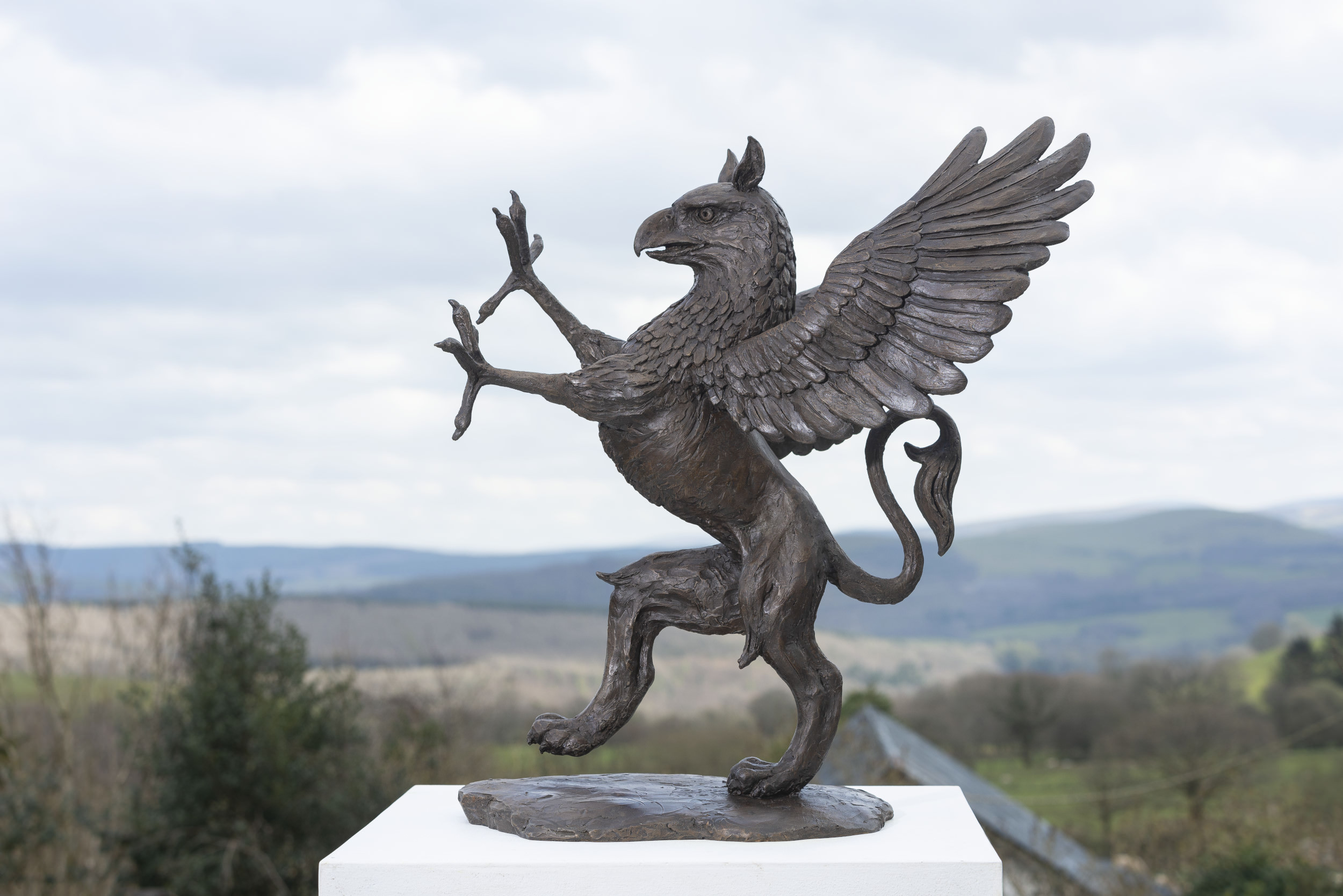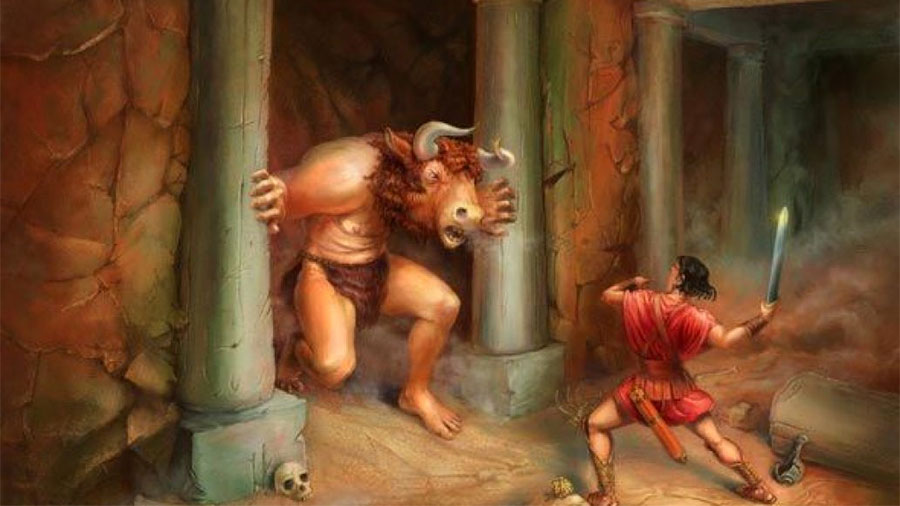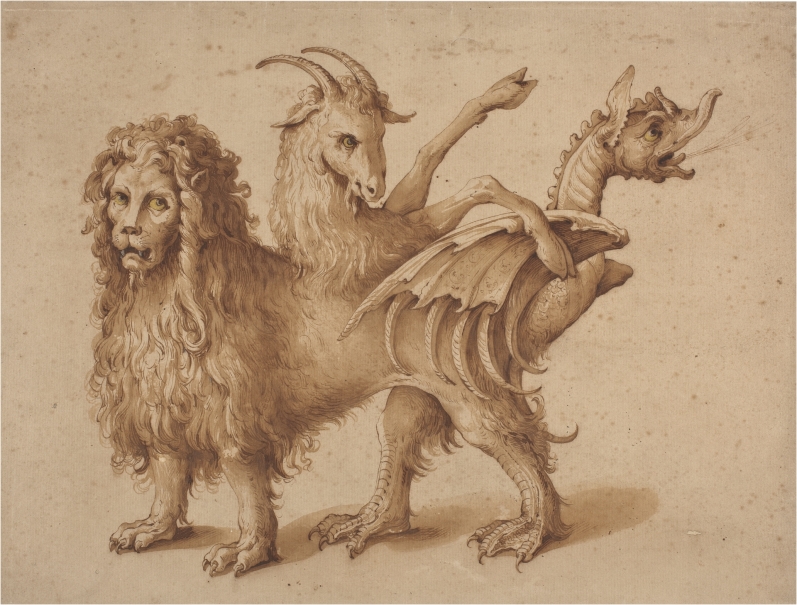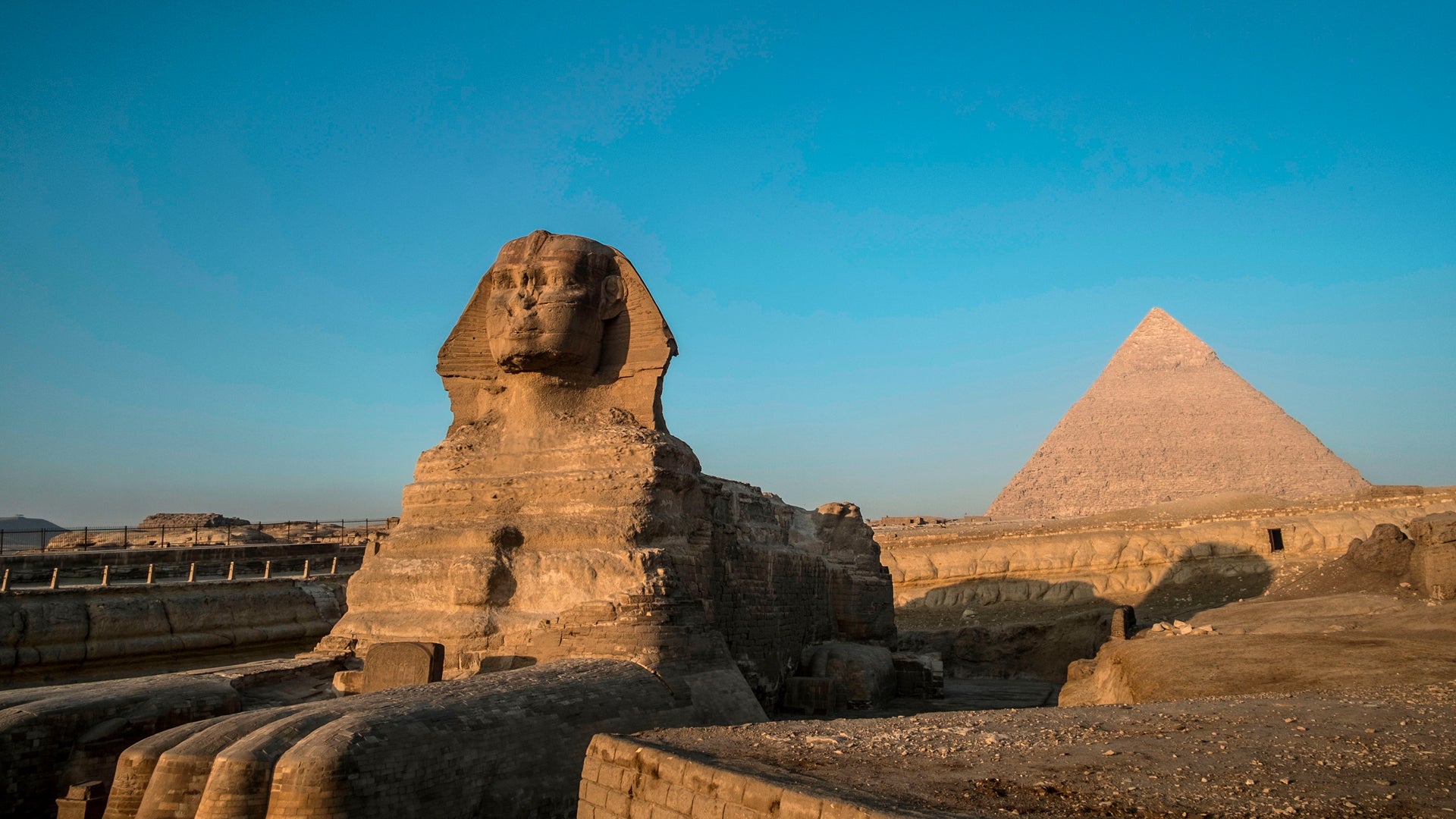Mythical Creatures In Greek Art - Unveiling The Fantastical World
This article explores the enchanting realm of mythical creatures in Greek art, delving into the stories they tell and the artistic techniques employed to bring them to life.
Author:Xander OddityReviewer:Dr. Felix ChaosphereNov 13, 202325K Shares363.4K Views
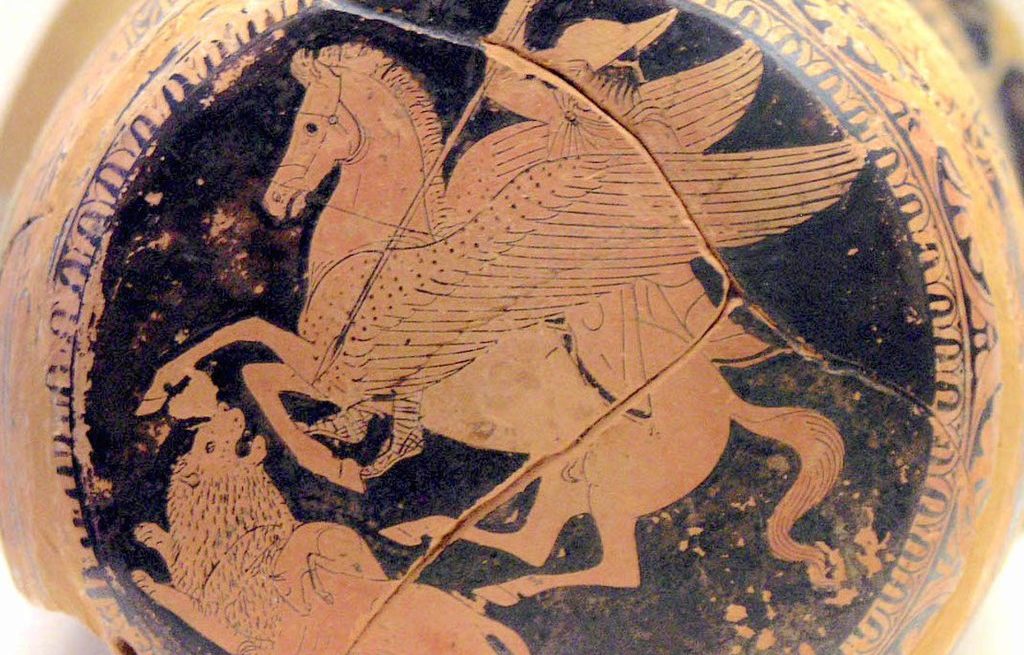
The rich tapestry of Greek art is intricately woven with threads of mythology, and at the heart of this narrative are the mythical creatures that have captured the imaginations of artists for centuries. From the majestic griffins to the fearsome chimera, Greek art has immortalized a pantheon of fantastical beings, each with its own symbolism and significance. This article explores the enchanting realm of mythical creatures in Greek art, delving into the stories they tell and the artistic techniques employed to bring them to life.
Sculptural Marvels - Griffin Guardians
In the realm of Greek sculpture, griffins emerged as revered guardians, their majestic forms adorning various structures with a regal presence. These mythical creatures were not mere embellishments but powerful symbols representing the virtues of strength, courage, and protective instincts.
Architectural Guardians
The griffin'srole extended beyond mythological narratives; it became a sentinel of significance in the architectural landscape. Griffins were often carved into the friezes of temples and monumental structures, standing as protectors of sacred spaces. The intricacy of these sculptures revealed the craftsmanship of Greek artists who, with meticulous detail, captured the sinewy muscles, the powerful wings, and the fierce yet noble expressions of these hybrid beings.
Tomb Guardians
In the solemn realm of funerary art, griffins found a poignant place. Often depicted on tombstones and grave monuments, these creatures served as guardians of the deceased, ushering souls into the afterlife. The symbolism transcended the physical realm, embodying the transition from life to death and emphasizing the enduring strength that persisted beyond mortal existence.
Pottery Tales - Griffin Stories In Clay
Beyond the grandeur of sculptures, Greek artists conveyed the mythos of griffins through the versatile medium of pottery. Vase paintings depicted griffins engaged in various activities, offering glimpses into the narratives of Greek mythology.
Ceremonial Vessels
Griffins adorned ceremonial vessels, their presence lending an air of mystique to banquets and rituals. The vessels, whether used for libations or ceremonial feasts, became vessels of storytelling, where the griffin's protective nature became intertwined with the sacred and communal aspects of Greek society.
Mythical Hunt Scenes
Vase painters often illustrated mythical hunt scenes featuring griffins. These depictions not only showcased the artistic skill of the painters but also conveyed the dynamic relationship between humanity and these mythical beings. Griffins were not solely guardians; they were active participants in the mythical tapestry, engaging with heroes and gods in epic adventures.
Legacy In Metalwork - Griffin Motifs In Jewelry
The influence of the griffin extended into the realm of ancient Greek jewelry, where craftsmen meticulously fashioned these mythical creatures into ornate pieces. Griffins adorned rings, bracelets, and amulets, becoming talismans that invoked the protective qualities attributed to these fantastical beings.
Symbolic Adornments
Wearing jewelry featuring griffin motifs was not merely a fashion statement but a symbolic choice. Individuals adorned themselves with these mythical creatures, carrying with them the essence of strength and courage in both everyday life and ceremonial occasions. The intricate details in the metalwork reflected the reverence with which these creatures were regarded.
The Minotaur - Labyrinthine Tales Of Myth And Monstrosity
The Minotaur, a creature of labyrinthine tales, occupies a prominent place in the pantheon of Greek mythology. Born of unnatural origins and confined to the depths of a labyrinth, the Minotaur encapsulates a narrative rich in symbolism, morality, and the indomitable human spirit.
Unraveling The Myth - Birth And Origins
The Minotaur's story begins with the ill-fated union of Queen Pasiphaë of Crete and a magnificent white bull gifted by Poseidon. From this unconventional liaison emerged a creature, half-human and half-bull, destined to be a symbol of both divine wrath and human folly.
The Curse Of King Minos
King Minos, the ruler of Crete, found himself ensnared in a divine curse. To conceal his shame, he commissioned the architect Daedalus to construct an intricate labyrinth to house the Minotaur, ensuring the creature's isolation from the world above.
The Price Of Hubris
The Minotaur's existence became a testament to the consequences of human arrogance. King Minos' pride and the ill-fated dalliance with the bull brought forth a monstrous offspring, a living embodiment of the cost of defying divine will.
Artistic Renderings - The Minotaur In Greek Art
Greek artists, captivated by the dramatic narrative surrounding the Minotaur, translated the myth into various artistic mediums, leaving an indelible mark on the cultural consciousness.
Pottery Narratives
Vase paintings depicted scenes from the Minotaur's myth, illustrating the labyrinth, the heroism of Theseus, and the chilling presence of the creature itself. These vessels served as canvases for storytelling, offering viewers glimpses into the labyrinthine depths and the hero's journey to confront the Minotaur.
Sculptural Horrors
Sculptors, too, sought to capture the essence of the Minotaur. Stone and bronze were shaped into fearsome forms, conveying the monstrous nature of the creature. These sculptures adorned temples, serving as cautionary symbols against the perils of unchecked power and the consequences of arrogance.
The Labyrinth - A Metaphor For Life's Challenges
The labyrinth, where the Minotaur dwelled, became a powerful metaphor in Greek mythology. Its winding passages and confusing turns mirrored the complexities and challenges of life itself.
Symbolic Journeys
The hero's quest to navigate the labyrinth, overcome its challenges, and confront the Minotaur became a symbolic journey. Theseus, guided by a thread provided by Princess Ariadne, ventured into the heart of darkness, embodying the triumph of courage and ingenuity over monstrous adversity.
Morality And Redemption
The Minotaur myth carries moral weight, urging reflection on the consequences of actions and the potential for redemption. Theseus' defeat of the Minotaur signifies the victory of virtue over monstrous deeds, illustrating that even in the darkest depths, humanity can find the light of redemption.
The Minotaur's Legacy - Modern Interpretations
Beyond ancient Greece, the Minotaur's legacy endures in literature, art, and popular culture. Authors, poets, and artists continue to draw inspiration from this mythical creature, reimagining its story in contemporary contexts.
Literary Resonance In The History
From Jorge Luis Borges' labyrinthine tales to modern fantasy novels, the Minotaur's presence echoes through literature. Authors explore themes of identity, destiny, and the struggle against inner monsters, infusing the ancient myth with new life and relevance.
Cinematic Enigma
In cinema, the Minotaur appears in various forms, from literal adaptations to metaphorical representations. Filmmakers delve into the psychological depths of the myth, using the Minotaur as a symbol of inner demons and the challenges that must be confronted on the path to self-discovery.
The Chimera - A Terrifying Fusion
The Chimera, a monstrous entity from the annals of Greek mythology, stands as a testament to the vivid imagination of ancient storytellers. This fearsome creature, with the body of a lion, the head of a goat, and the tail of a serpent, transcends the boundaries of the natural world, embodying chaos and destruction. As artists endeavored to depict this fantastical fusion, they embarked on a visual journey that explored the intricate balance between disparate elements.
Symbolism In Form - Capturing The Chimera's Essence
The challenge of visually representing the Chimera lay in the harmonious yet discordant combination of its constituent parts. The lion, a symbol of strength and majesty; the goat, representing stubbornness and indomitability; and the serpent, a creature associated with cunning and danger – these elements converged in a mythical amalgamation that sparked the imagination of artists.
Sculpting Monstrosity - The Chimera In Stone
Sculptors, masters of stone and bronze, sought to breathe life into the Chimera. Carved into reliefs and statues, the creature's terrifying visage became a focal point in temples and public spaces. The sinuous curves of the serpent's tail, the imposing mane of the lion, and the eerie countenance of the goat's head converged to create an awe-inspiring yet horrifying presence.
Painterly Horrors - The Chimera On Canvas
On the canvas of Greek pottery and murals, the Chimera became a recurring motif. Artists utilized the fluidity of paint and the curvature of amphorae to convey the dynamic essence of this mythical creature. Scenes of heroes confronting the Chimera adorned vases, illustrating the eternal struggle between humanity and the monstrous forces that threatened its existence.
Symbolic Imagery - Chimera In Context
The Chimera's presence in Greek art extended beyond mere representation; it became a symbol laden with metaphorical significance. Its symbolic imagery served as a cautionary tale, warning against the perils of unchecked power and the consequences of hubris.
Morality In Mosaic - The Chimera's Narrative
Mosaics, intricate in their composition, depicted the Chimera in scenes that conveyed moral lessons. The creature's relentless pursuit of destruction symbolized the consequences of unchecked ambition and the havoc wrought by arrogance. These mosaics became visual parables, encouraging viewers to reflect on the ethical dimensions of power and the delicate balance required to avoid descending into chaos.
Hubris In Pottery - Chimera As Moral Arbiter
Pottery, a canvas for storytelling, showcased the Chimera in scenes that explored the theme of hubris. Whether it was the defiance of gods or the overreach of mortal rulers, the Chimera stood as a relentless force, a reminder that unchecked power invites destruction. Artists used the creature's imagery to infuse their work with moral gravity, urging viewers to contemplate the ethical dimensions of their actions.
Legacy Of Fear - The Chimera In Modern Discourse
The legacy of the Chimera extends beyond the boundaries of ancient Greece, permeating modern discourse in art, literature, and popular culture. Its enduring presence speaks to the timeless relevance of the cautionary tales woven into its myth.
Literary Reverberations
From the pages of classical literature to contemporary novels, the Chimera's symbolism endures. Authors explore its narrative, using it as a metaphor for societal challenges, the consequences of environmental neglect, and the ethical dilemmas faced by individuals and nations.
Cinematic Resonance
In cinema, the Chimera continues to be a source of inspiration. Filmmakers, animators, and visual storytellers draw upon its imagery to convey themes of inner conflict, the destructive consequences of unchecked ambition, and the eternal struggle between heroism and monstrosity.
The Sphinx - Guardian Of Riddles
In the intricate web of Greek mythology, the Sphinx stands out as a captivating enigma. This mythic entity, characterized by the head of a human, the body of a lion, and the wings of a bird, demands attention for its majestic hybrid form and its significance as a guardian of riddles.
Artists, entranced by the Sphinx's enigmatic aura, endeavored to encapsulate its mysterious essence and the intellectual trials it imposed on those bold enough to draw near. For further exploration of the profound influence of Greek mythology, visit Greeklish.
Sculpting Enigma - The Sphinx In Stone
Sculptors, masters of stone and chisel, embarked on the formidable task of immortalizing the Sphinx in marble and bronze. The creature's distinctive features, a convergence of regality and enigma, were skillfully carved into statues that adorned temples, city gates, and other sacred spaces.
Icon Of Wisdom - Sphinx In Architectural Marvels
Architectural wonders, such as the Sphinx flanking the entrance to temples or perched atop pedestals, showcased the creature's symbolic significance. The Sphinx was not merely a guardian; it embodied wisdom and the pursuit of knowledge. Its presence in these grand structures marked the threshold between the mundane and the sacred, inviting those who approached to engage in a mental duel with the riddles it posed.
Painterly Intrigues - Sphinx In Scenes Of Challenge
On the canvas of Greek pottery and murals, artists skillfully portrayed scenes where the Sphinx's riddles tested the wits of heroes and seekers of knowledge. The mythical encounters between the Sphinx and individuals such as Oedipus became visual narratives of intellectual prowess, adding a layer of complexity to the traditional hero's journey.
Mysterious Dialogues - Sphinx In Dialogue
Artistic representations often showcased the Sphinx engaged in a dialogue with those who sought passage. The tension and intellectual intensity of these exchanges were conveyed through subtle brushstrokes and careful attention to facial expressions. The Sphinx's gaze, simultaneously regal and inscrutable, became a focal point, inviting viewers to ponder the mysteries encapsulated in its riddles.
Architect Of Paradox - Sphinx Symbolism In Context
The Sphinx's symbolismextended beyond its physical representation. It became an architect of paradox, challenging individuals to navigate the intricate labyrinth of its riddles, each question a metaphorical passage that required not only intellectual acuity but also moral discernment.
Moral Dilemmas - Sphinx As Ethical Arbiter
Artists often depicted the Sphinx as a moral arbiter, its riddles posing not just intellectual challenges but ethical dilemmas. The consequences of answering incorrectly were dire, intertwining the Sphinx's role with broader themes of morality and judgment. The creature, perched between the realms of wisdom and danger, stood as a guardian not only of physical passage but also of the ethical compass of those who sought to unlock its mysteries.
Legacy Of Intellectual Challenge - Sphinx In Modern Interpretations
The Sphinx's legacy endures, resonating in modern literature, art, and intellectual discourse. Its role as a purveyor of riddles and a symbol of intellectual challenge continues to captivate contemporary audiences.
Literary Resonance
Authors, poets, and playwrights draw inspiration from the Sphinx, weaving its enigmatic presence into narratives that explore the complexities of human thought and the pursuit of knowledge. The Sphinx's riddles become metaphors for life's uncertainties and the ongoing quest for understanding.
Cinematic Puzzles
In cinema, the Sphinx makes appearances, both literal and metaphorical, challenging characters to grapple with questions that transcend the physical and delve into the realms of philosophy and existentialism. Filmmakers use the Sphinx's symbolism to explore the intellectual and moral landscapes of their narratives.
Mythical Creatures In Greek Art - FAQs
What Mythical Creatures Have Appeared In Art Throughout Time?
Mythical creatures have been a recurring theme in art across various cultures and time periods. Some of the most commonly depicted mythical creatures include:
- Dragons:Found in various forms across Asian, European, and Middle Eastern cultures, dragons are legendary creatures often associated with power, wisdom, and sometimes malevolence.
- Griffins:These majestic beings, with the body of a lion and the head of an eagle, have been featured in art, particularly in medieval European contexts, symbolizing strength and protection.
- Unicorns:Often portrayed as a horse with a single horn, unicorns have been a symbol of purity and grace in art, appearing in both Western and Eastern mythologies.
- Phoenix:A mythical bird that is cyclically regenerated or reborn, the phoenix is often associated with the sun and immortality, appearing in art across various cultures, including ancient Egyptian and Greek.
- Mermaids and Mermen:Human-fish hybrids, mermaids and mermen have been depicted in art across different cultures, representing themes of mystery, enchantment, and the allure of the sea.
- Centaurs:These creatures, with the upper body of a human and the lower body of a horse, have been depicted in ancient Greek art and continue to appear in various forms in modern art.
What Animals Were Used In Ancient Greek Art?
Ancient Greek art prominently featured a variety of animals, many of which held symbolic significance or were associated with mythology. Some notable animals in ancient Greek art include:
- Lions:Lions were commonly depicted in Greek art and often symbolized strength, courage, and regality. They appeared on sculptures, pottery, and architectural elements.
- Owls:The owl, associated with the goddess Athena, was a symbol of wisdom and knowledge in ancient Greek culture. It frequently appeared on coins, pottery, and other artifacts.
- Snakes:Snakes were associated with healing and protection in Greek mythology. The staff of Asclepius, the god of medicine, featured a serpent and became a symbol of healing.
- Dolphins:Dolphins were often associated with the sea god Poseidon and were depicted in various contexts, symbolizing playfulness, protection, and maritime themes.
- Horses:Horses were significant in Greek art, especially in depictions of heroes like Achilles. They symbolized strength, nobility, and were featured in various scenes, from mythological narratives to athletic competitions.
- Dogs:Dogs were depicted in various roles, including as companions in everyday life and as guardians in mythology. Cerberus, the three-headed dog guarding the entrance to the Underworld, is a notable example.
What Are Mythical Creatures In Greek Myths?
Greek mythology is rich with a diverse array of mythical creatures. Some of these creatures include:
- Cerberus:A three-headed dog guarding the entrance to the Underworld.
- Centaurs:Human-horse hybrids known for their strength and wild behavior.
- Chimera:A fearsome creature with the body of a lion, the head of a goat, and the tail of a serpent.
- Griffins:Majestic beings with the body of a lion and the head of an eagle.
- Harpies:Winged creatures with the face of a woman and the body of a bird, often associated with storms and sudden gusts of wind.
- Minotaur:A creature with the body of a human and the head of a bull, confined to the labyrinth on Crete.
- Sirens:Enchanting beings, often portrayed as part-bird, part-woman, luring sailors with their captivating songs.
- Phoenix:A mythical bird that cyclically regenerates or is reborn from its ashes.
Conclusion
The mythical creatures of Greek art continue to captivate us, transcending the boundaries of time and culture. Through meticulous craftsmanship and creative expression, ancient Greek artists breathed life into these fantastical beings, weaving them into the very fabric of artistic and mythological legacy. As we explore the galleries and museums that house these masterpieces, we are invited to unravel the stories and symbolism behind each mythical creature, connecting with the enduring spirit of ancient Greek imagination.

Xander Oddity
Author
Xander Oddity, an eccentric and intrepid news reporter, is a master of unearthing the strange and bizarre. With an insatiable curiosity for the unconventional, Xander ventures into the depths of the unknown, fearlessly pursuing stories that defy conventional explanation. Armed with a vast reservoir of knowledge and experience in the realm of conspiracies, Xander is a seasoned investigator of the extraordinary.
Throughout his illustrious career, Xander has built a reputation for delving into the shadows of secrecy and unraveling the enigmatic. With an unyielding determination and an unwavering belief in the power of the bizarre, Xander strives to shed light on the unexplained and challenge the boundaries of conventional wisdom. In his pursuit of the truth, Xander continues to inspire others to question the world around them and embrace the unexpected.

Dr. Felix Chaosphere
Reviewer
Dr. Felix Chaosphere, a renowned and eccentric psychiatrist, is a master of unraveling the complexities of the human mind. With his wild and untamed hair, he embodies the essence of a brilliant but unconventional thinker. As a sexologist, he fearlessly delves into the depths of human desire and intimacy, unearthing hidden truths and challenging societal norms.
Beyond his professional expertise, Dr. Chaosphere is also a celebrated author, renowned for his provocative and thought-provoking literary works. His written words mirror the enigmatic nature of his persona, inviting readers to explore the labyrinthine corridors of the human psyche.
With his indomitable spirit and insatiable curiosity, Dr. Chaosphere continues to push boundaries, challenging society's preconceived notions and inspiring others to embrace their own inner tumult.
Latest Articles
Popular Articles
